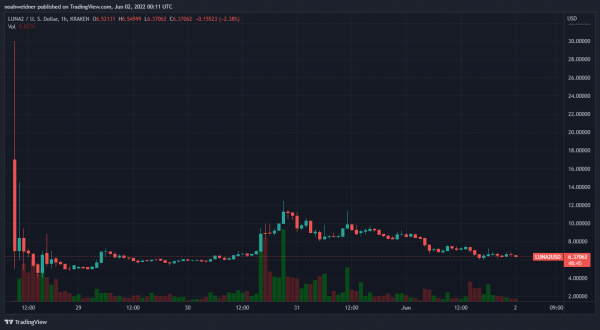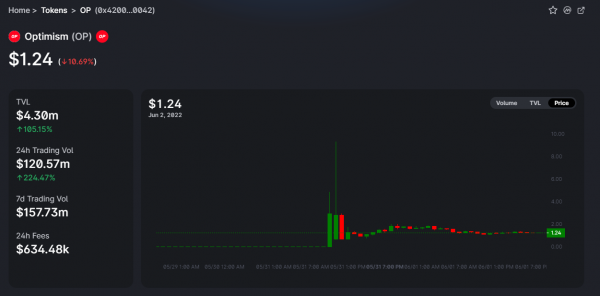Two high-profile airdrops lost steam out of the gate this week — the Optimism ($OP.X) airdrop and the Terra 2.0 ($LUNA.X) airdrop.
Both airdrops have been anticipated for the last few weeks, albeit for different reasons: the Optimism airdrop has been eagerly-awaited by early-adopters of the Optimism Network, an Ethereum layer-2 blockchain. Terra’s new $LUNA.X airdrop has been eagerly-awaited by people who lost stacks of cash on the original Terra blockchain.
Unfortunately, whether you were being rewarded or being compensated for losses — you didn’t have much selling at an ideal price.
Both the $OP.X and $LUNA.X tokens lost steam out of the gate. Both fell more than 50%.
Get a load of $LUNA.X’s price action…

And now check out the $OP token, which airdropped today. The visual is fresh off the Uniswap price for $OP on the Optimism chain…

The two airdrops prove that there’s enormous tension weighing on new assets, and on the broader market, in spite of an ongoing contraction in and around the crypto space. We’ll keep you guys updated on how these assets fare in the days to come.
